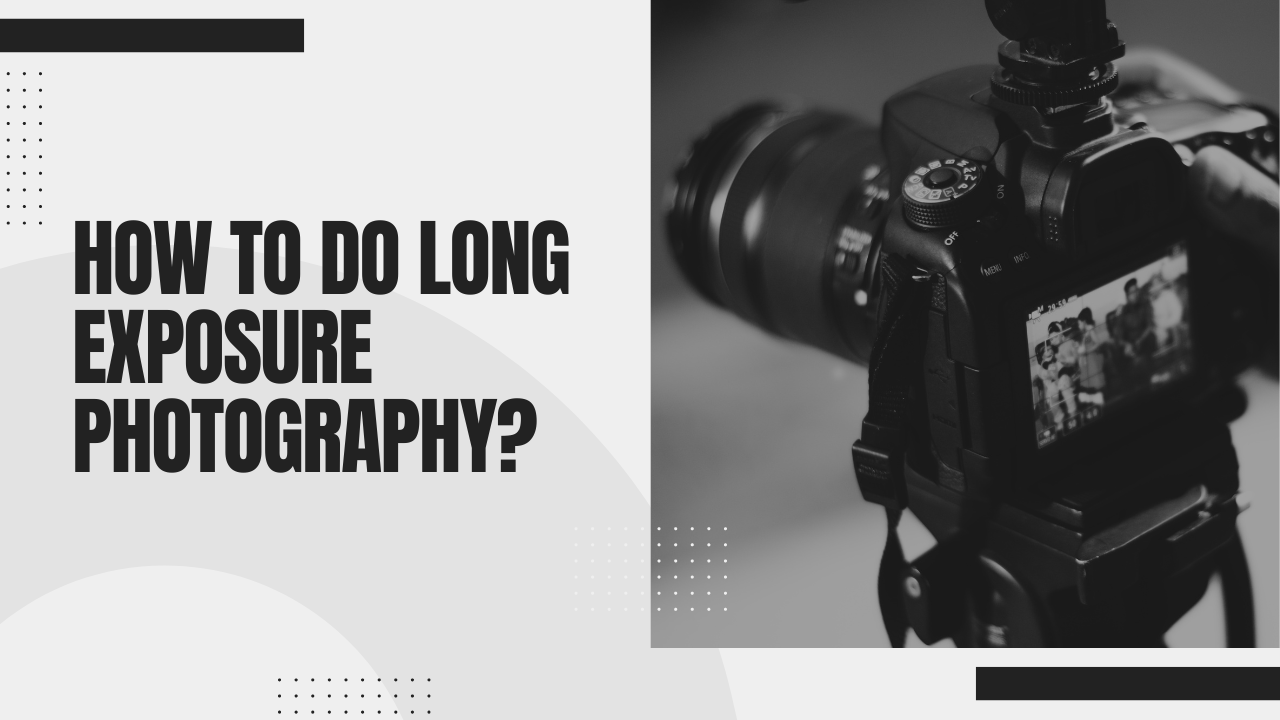Long exposure photography is a technique used to capture stunning images by leaving the camera’s shutter open for an extended period of time. This allows for the accumulation of light over time, resulting in unique effects such as light trails, silky waterfalls, and star trails. In this guide, we will explore the steps and considerations involved in achieving compelling long exposure photographs.

To begin, ensure you have the necessary equipment. You will need a camera with manual mode capabilities, a sturdy tripod to keep the camera steady, and a remote shutter release to minimize camera shake. Additionally, consider using a neutral density (ND) filter to reduce the amount of light entering the lens.
Also, Read: How To Photograph Glass Bottles?
Location And Camera Setup:
Choose a location that offers interesting subjects and elements that will benefit from the long exposure effect. Scenic landscapes, cityscapes, water bodies, and night skies are popular choices. Pay attention to composition principles, such as the rule of thirds, leading lines, and foreground interest, to create a visually appealing image.
Camera Setup: Mount your camera securely on the tripod and level it. Disable image stabilization and autofocus, as they can introduce blur during long exposures. Set the camera to manual mode and select a low ISO setting (typically between ISO 100-400) to minimize noise. Use the widest aperture available (small f-number) for a shallow depth of field or adjust it according to your desired effect.
Shutter Speed And Focusing:
Shutter Speed and Bulb Mode: Long-exposure photography is all about manipulating shutter speed. Set your camera to Bulb (B) mode or use a manual exposure mode that allows you to control the shutter speed manually. Start with a shutter speed of around 30 seconds, and adjust it based on the available light and desired effect. Experiment with different exposure times to achieve the desired results.
Focusing: Switch your lens to manual focus and use live view to achieve precise focus. Zoom in on the focal point and adjust the focus manually. If shooting at night, consider using a flashlight to illuminate the subject briefly for easier focusing. Once focused, remember to lock the focus to prevent accidental changes.
Patience And ND Filter:
ND Filter: Attach the ND filter to your lens if you are shooting in bright conditions or during the daytime. This will help reduce the amount of light entering the camera, allowing for longer exposure times without overexposing the image. Adjust the exposure settings accordingly to compensate for the reduced light.
Timing and Patience: Timing is crucial in long-exposure photography. Consider the movement of the elements you want to capture, such as clouds, water, or traffic. Wait for the ideal moment when the scene is most compelling. Be patient and take multiple shots to increase your chances of capturing the perfect image.
Experiment & Fun:
Post-Processing: Once you have captured your long exposure shots, transfer them to your computer for post-processing. Use editing software such as Adobe Lightroom or Photoshop to enhance the image further. Adjust the white balance, contrast, saturation, and sharpness to bring out the desired details and mood. However, remember to maintain the integrity of the original scene and avoid excessive manipulation.
Experiment and Have Fun: Long-exposure photography is an artistic form that allows for creativity and experimentation. Don’t be afraid to try different techniques, compositions, and subjects. Embrace the unexpected results and enjoy the process of learning and refining your skills.
Conclusion:
Long-exposure photography offers a unique way to capture stunning images with mesmerizing effects. By following the steps outlined in this guide and practicing with patience and creativity, you can master the art of long-exposure photography and create captivating images that stand out from the crowd. So grab your camera, head out to your favorite location, and start capturing the magic of time in a single frame.